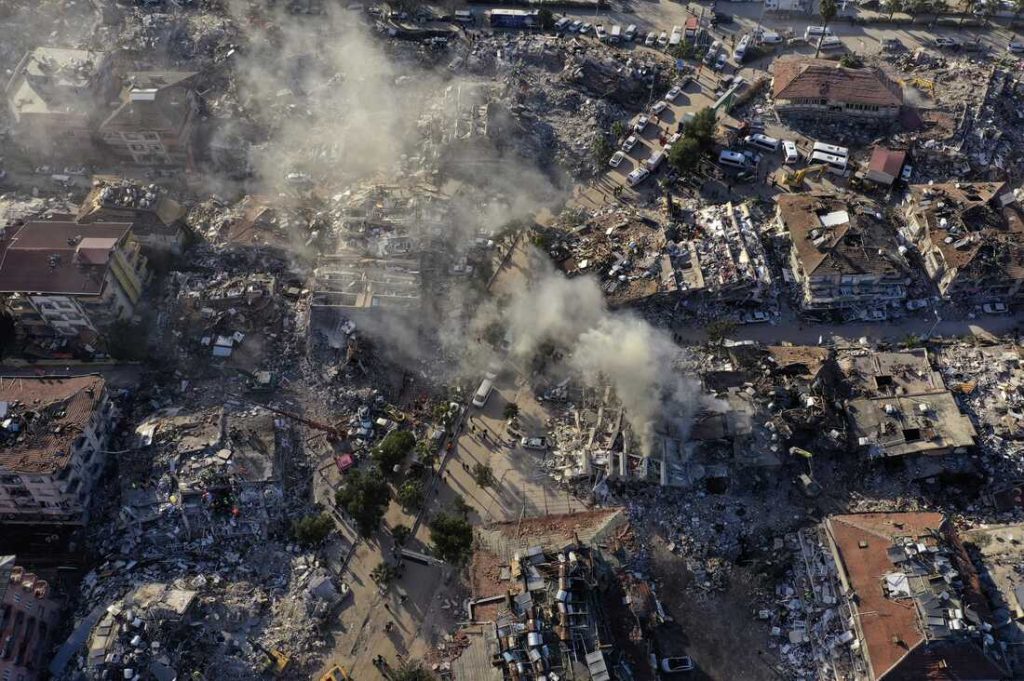No products in the cart.
News
Hot: Massive Amount Of Casualties In Turkey And Syria Earthquake
Over 28,000 people have died in the earthquake in Turkey and Syria, while many more are still being pulled from the rubble. The emphasis of the rescue has turned to assisting survivors. According to local officials, this figure is expected to rise due to the magnitude of the calamity.
1. Where does the earthquake originate?
The Earth’s crust is made up of several different tectonic plates that smash with one other during displacement, releasing energy in the form of waves.
During earthquakes in Turkey, the Arabian plate collided with the Anatolian plate as it moved northward, wreaking havoc. Scientists have also observed a large number of aftershocks following the February 6 earthquake. They expect that they will continue to occur, as they did two centuries
Turkey is situated on the Anatolian plate. Aside from the East Anatolian Fault in the country’s southeast, where the latest earthquake occurred, Turkey is also cut by the North Anatolian Fault from west to east, making it become one of the center of earthquake.
2. Objective and subjective reasons
First and foremost, the magnitude of this earthquake is 7.8. The epicenter was also fairly shallow, only around 18 kilometers away, inflicting considerable damage to buildings above ground.
The magnitude or location of earthquakes, however, is not the primary cause. The significant number of deaths is also due to it, which struck in the early morning hours while many were asleep in their houses. Furthermore, the lack of stability in local infrastructure is a problem to consider.
A significant disaster has not struck the catastrophe area in over 200 years. Scientists found no evidence of this earthquake’s potential. As a result, when calamity comes, both the government and the people are taken aback.
3. The number of deaths is rapidly growing
Despite the fact that rescuers have saved many more people, hope is dwindling, according to Reuters and DW. Martin Griffiths, the UN’s aid director, predicted that the death toll will more than double. The assessment came after he traveled to southern Turkey on February 11 to inspect the earthquake’s damage.
This natural disaster that struck Turkey a few days ago is one of the ten worst earthquakes in history, killing at least 24,517 people. More than 3,500 people have been killed in Syria, although the toll has not been updated since February 10.
Turkey has reported more than 2,000 aftershocks since the beginning of the week. The disaster that rocked Turkey earlier this week was the country’s biggest calamity since 1939.
The earthquake activity in Syria has devastated the country’s northwestern region, which is controlled by rebels. Many individuals have been uprooted a second time as a result of the decade-long civil war. Areas controlled by rebels receive less aid than those controlled by the Syrian government.
4. Rescue operations
Countries and organizations all across the world have responded to the earthquake today with money, equipment, and boots on the ground. Doctors Without Borders said that it has 500 employees working in Syria, some of whom have lost loved ones in the earthquake. NATO members are deploying over 1,400 emergency responders, and a US rescue team is scheduled to arrive in the Turkish city of Adana on February 8. Meanwhile, Mexican rescue dogs are en route to Turkey.
In northern Syria, a newborn baby girl was rescued from the debris of her home. A relative told AFP that the girl’s umbilical chord was still linked to her mother when it was discovered. The girl’s mother is believed to have died shortly after giving birth.
5. Extreme weather conditions
Rescue operations are being hampered by severe winter weather. Aftershocks, according to the US Geological Survey, are also a potential risk. As a result, since the 7.8 magnitude earthquake in southern Turkey on February 6, at least 125 aftershocks of magnitude 4.0 or higher have occurred. Although their frequency and severity are diminishing, aftershocks of magnitude 5 to 6+ are still likely, posing a danger of additional damage to already damaged structures as well as a threat to rescuers and survivors.
6. Massive destruction
Thousands of buildings have collapsed in two countries and aid agencies are warning of “catastrophic” consequences in northwestern Syria, where millions of vulnerable and displaced people are relying on assistance. humanitarian aid. Satellite images have shown the extent of damage in the Turkish towns of Islahiye and Nurdagi, near the epicenter of earthquakes.
7. Humanitarian disaster
The World Health Organization believes that the earthquake could affect up to 23 million people. The situation is particularly bad in Syria, where the UN estimates that almost 70% of the population relied on humanitarian aid prior to the earthquake, and the problem has only gotten worse since the disaster. The damage has temporarily halted UN cross-border relief activities into Syria, while UN humanitarian teams continue to seek out individuals in need. Meanwhile, hospitals in Syria are “completely overburdened” as a result of the ongoing war, according to UNICEF‘s representative in Aleppo. Express your love and prayers for those who are in the midst of earthquakes with the items below from Koolteee:

Help For Turkey Donation For Turkey Be Strong Turkish T-Shirt
I pray for Turkey. You pray for Turkey. We pray for Turkey!

Help For Turkey Donation For Turkisk Earthquake Victim T-Shirt
We hope that everyone in Turkey and Syria is secure.

Earthquake Fundraiser Pray For Turkey Financial Support T-Shirt
Big heart to Turkey and Syria.
8. How long can people survive stuck beneath the wreckage?
Experts say that, in addition to the overwhelming size of the disaster, the harsh winter weather is hampering rescue attempts, the government’ tardy response, and a lack of experience, manpower, and equipment. Another factor that adds to the aforementioned fact is the limits of how long individuals may endure being buried in the ground following an earthquake.
According to scientists, the sufferers can live for up to a week or more. However, this is dependent on their injuries, the manner in which they were imprisoned, and the weather conditions.
The majority of rescues take place within the first 24 hours after a disaster. The victims’ prospects of survival are decreasing with each passing day. Many of the victims were severely hurt or killed by falling rubble, rocks, and concrete.
Age, physical and mental health are all essential considerations. In the few situations where individuals miraculously survive harsh circumstances, they are typically younger people who were “fortunate enough to find a bag in the rubble or somehow reach it, necessary elements such as air and water.”
9. Conclusion
Earthquake-affected areas in Turkey and Syria are now receiving international assistance. The magnitude of the humanitarian situation is becoming more apparent. Aid organizations are also warning of challenges in locating survivors and treating the injured. Keep an eye out for updates on this disaster!

